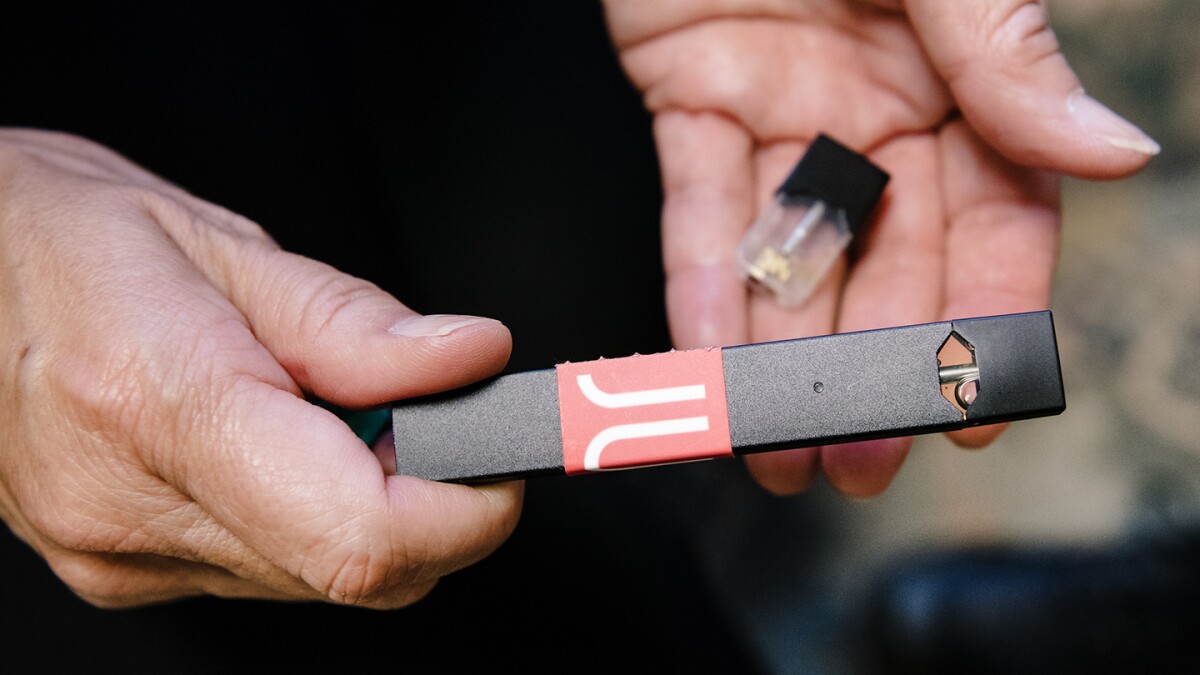The use of electronic cigarettes or vaping has grown in popularity in recent years, and the concerns regarding the health risks and safety have also risen. Vaping can cause smoke inhalation, which is especially hazardous in indoor settings like offices, homes and schools. To tackle this issue, many people are turning to vape detector, which is able to detect and monitor vaping indoors. In this article, we’ll review the various kinds of vape detectors available as well as their functions and the ways they can be used in different situations.

Vape detectors are electronic gadgets that use sensors to detect the presence of vape smoke or particles in the air. They are designed to provide the precise measurement of indoor accumulated vape emissions. This can help in enforcing no-smoking policies and identifying areas where people might be smoking. Vape detectors can be found in many different types that include those designed for use at school, at home and in other public spaces.
Vape detector for home use are becoming increasingly popular among families who want to protect their children from the harmful effects of secondhand smoke. They’re small, subtle and are suitable for use anywhere in the house where vaping is likely to take place. This includes bedrooms as well as living rooms. These detectors make use of different sensors to identify vaping. They are able to detect the particles that come from vaping devices using PM2.5 sensors. Vape detectors for home use have apps for smartphones which will notify you if vaping is detected.
Schools are another place where vape detectors are used to address the issue of smoking vapes in indoor locations. Many schools have adopted no-smoking guidelines, as well as prohibiting the use of devices for vaping. Vape detector can help school administrators enforce these policies and identify places where students might be smoking. The devices are generally installed in public areas like bathrooms, hallways, and locker rooms. They can also be connected to central monitoring systems that inform administrators when vaping has been discovered.
They’re more advanced than the devices designed for homes, because they cover a wider area and are able to distinguish between smoking (and other types of smoke) and particles. They are comprised of comprising laser-scattering and other sensors that detect vaping. They provide accurate readings. Some models distinguish among different vaping devices such as e cigarettes and vaping pen.
Vape detectors can be seen in public areas such as casinos, hotels and offices. These detectors monitor indoor air quality, and also detect the presence of vaping. They’re intended to provide a healthy and secure environment for guests and employees. They can be installed in common areas, like rooms for conferences, lobbies and break rooms. They offer real-time information about indoor air quality.
Laser scattering technology is one of the most significant characteristics of a vape detector. It is able to detect the particles of smoke from vaping. This technology is highly sensitive and is able to detect small amounts of vape smoke in the air. It functions by shining a light beam into the air and detecting the scattering of light due to particles. Vape detectors can provide accurate reports on indoor air quality and identify areas where vaping occurs.
Another important feature of vape detector for home is the capability to connect to an app for smartphones, which can provide real-time notifications and alerts when vaping is identified. This is particularly useful for parents, who may want to monitor the use of vape in the home by their children or school officials who want to be notified when students use. Vape detectors can also be equipped with cloud-based data storage, that can be beneficial for tracking the quality of indoor air and identifying areas which may need additional attention.
Vape detectors provide a powerful way to monitor and detect indoor smoking at homes or schools as well as other public spaces. These devices make use of sensors and technologies to accurately determine the quality of air in a room. They can also be connected to smartphone apps to receive notifications in real-time and alerts.
Vape detectors are a great way to keep people safe from harm who are exposed to indoor air pollution. They eliminate distractions so we can focus on maintaining and monitoring the purest possible air quality. The technology is relatively new, and its effects need study, but there is a consensus that devices can greatly improve the quality of indoor air and our overall health. Vape detectors’ technology has proven to be extremely efficient in the capture of dangerous elements such as carbon monoxide, ultrafine particulate material (PM2.5) and volatile organic compounds. It’s now possible to identify vaping products with greater precision than was previously possible. Vape detectors are a positive technological advancement for safety and health. As this revolutionary technology continues to increase in its use, it could in the future help us safeguard our family members from harms related to secondhand smoking or vaping within our homes.